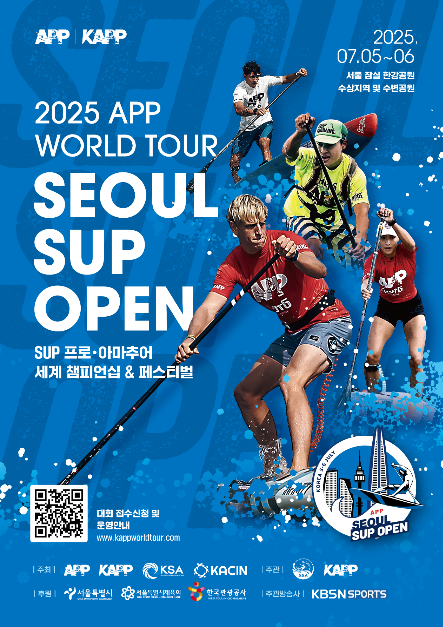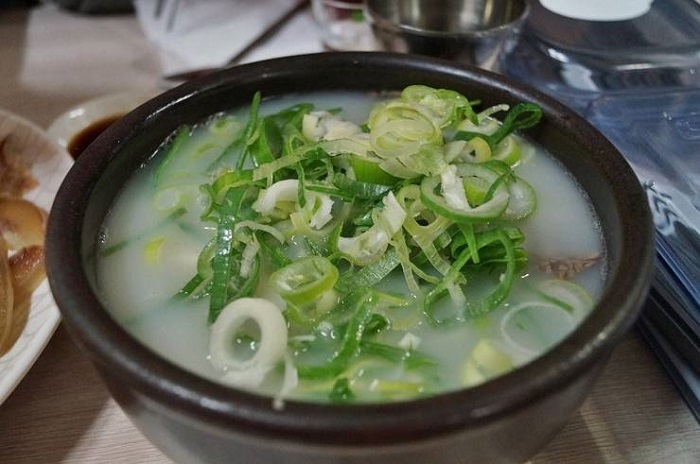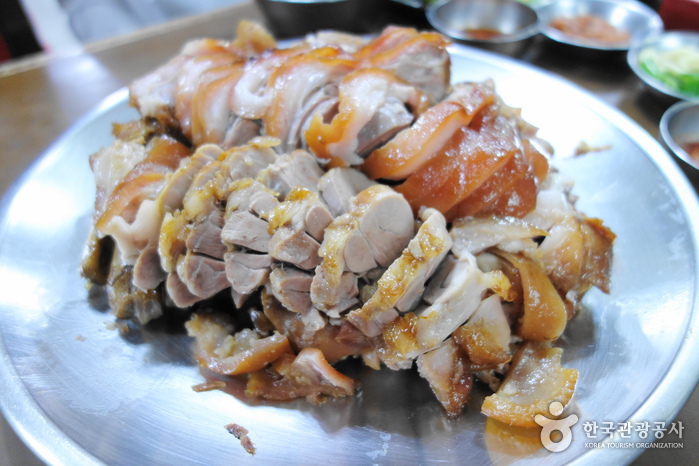Jamsil Hangang Park Outdoor Swimming Pool (한강시민공원 잠실수영장(실외))
4.8Km 2019-07-30
65, Hangaram-ro, Songpa-gu, Seoul
+82-421-2564
Six of the city's Hangang Parks have outdoor swimming pools, including Jamsil Hangang Park. Supported by meticulous water quality management, they are not only safe, but also an inexpensive alternative to private facilities. Excellent amenities include swimming equipment rentals, food, and beverages.
2025 APP WORLD TOUR SEOUL SUP OPEN
4.8Km 2025-06-25
65 Hangaram-ro, Songpa-gu, Seoul
+82-2-6677-1599
The APP World Tour is a global stand-up paddeboard(SUP) competition that has been held annually since 2010, traveling to major cities around the world including Spain and Portugal. In Korea, the event has been hosted since 2022 under the auspices of the Korea Association of Paddling Professionals(KAPP). The event is meant to gather everyone regardless of their skill or experience, from beginners to professionals. In addition to the competition, everyone can participate in the sides events such as Floating Yoga, Silent Yoga, Paddle for the Planet, Dog Yoga, K-pop and Afropop dance performances or simply come to watch the show!
CU - National Museum of Korea Branch [Tax Refund Shop] (cu중앙박물관점)
4.8Km 2024-06-26
137, Seobinggo-ro, Yongsan-gu, Seoul
-
I Love Sindangdong Tteokbokki (아이러브신당동떡볶이)
4.8Km 2024-03-07
50, Toegye-ro 76-gil, Jung-gu, Seoul
+82-2-2232-7872
Situated in Sindang-dong Tteokbokki Town, I Love Sindangdong Tteokbokki is a famous tteokbokki restaurant. Tteokbokki is a typical Korean street food, consisting of rice cakes made with flour or rice flour and stir-fried in red chili paste. The rice cakes are simmered in a broth with seasonings, along with fish cakes, vegetables, boiled eggs, mandu, and other ingredients. The best thing is that the dish can be customized with various ingredients such as cheese, ramyeon noodles, chewy noodles, and ham. Leftover broth can be fried with rice for a satisfying meal.
Olive Young - Hwanghak Sageori Branch [Tax Refund Shop] (올리브영 황학사거리)
4.8Km 2024-04-17
410, Wangsimni-ro, Seongdong-gu, Seoul
-
Jinguk Seolleongtang (진국설렁탕)
4.8Km 2021-03-29
293, Gosanja-ro, Seongdong-gu, Seoul
+82-2-2292-4700
It is a store that’s open 24 hours a day. This Korean dishes restaurant is located in Seongdong-gu, Seoul. The most famous menu is ox bone soup.
Pyeongando Jokbal (평안도족발집)
4.8Km 2021-03-30
174-6, Jangchungdan-ro, Jung-gu, Seoul
+82-2-2279-9759
Pyeongando Jokbal has a history of over 50 years, and is very popular among all the jokbal (pig's trotter) restaurants in the Jangchung-dong Jokbal Street area. The taste is outstanding, making this hard-to-find restauant a favorite among jokbal lovers.
Wonjo 1ho Jangchungdong Halmeonijip(원조1호장충동할머니집)
4.8Km 2020-11-17
174, Jangchungdan-ro, Jung-gu, Seoul
+82-2-2279-9979, +82-2-2275-1064
Following his mother’s footsteps, the son of the previous owner is now managing the family business. Opened during the early years of Jokbal Street, the delicious meat at this restaurant is fondly remembered by customers. While the meat itself has almost no fat, the fat portion is extremely soft and savory. This restaurant is also different from the others in that it provides kongnamul-guk (bean sprout soup) with the jokbal (steamed pork hock). Pyeongyang-style naengmyeon (cold noodles) and tteok-mandu-guk (rice cake-dumpling soup) are also delicious. Pyeongyang naengmyeon is cooked to suit South Korean tastebuds. Besides, the noodles and dumplings are hand-made. Despite the restaurants long history, the building of the restaurant is clean and well-maintained as it was being rebuilt after a fire in the 1980s. There are plenty of tables on the first and second floors to accommodate customers, and the third floor is reserved for large groups. Especially noticeable is the clean appearance both inside and out, despite the restaurant’s long history; probably because the building was rebuilt after a fire in the 1980s. Plenty of tables on the first and second floors accommodate customers, and the third floor is reserved for large groups.
Korea Medical Association Co,ltd. (주식회사 한국의료협회)
4.8Km 2025-07-29
(B1-415), 375 Achasan-ro, Gwangjin-gu, Seoul
The Korea Medical Association (KMA) continuously receives patients through a global network of Korean expatriates, numerous contracted agencies in various countries, and partnerships with hospitals, clinics, and healthcare platforms.
Following the footsteps of well-established countries in attracting international patients, such as Thailand and Singapore, other nations like Malaysia, Costa Rica, and Taiwan, known for providing high-quality domestic medical services, are now focusing on attracting international patients through major hospitals.
In this competitive international landscape, KMA is introducing patient-centered services like optimal matching, telehealth care service, My Health Data service, and medical dispute legal systems, to highlight the advantages of Korean healthcare and maintain high service quality.
KMA has contracts with all types of medical institutions in Korea, including general hospitals, specialized hospitals, and clinics. The association aims to provide the best hospital selection and healthcare services tailored to each patient's condition and budget.
Sejong University Museum (세종대학교 박물관)
4.8Km 2022-09-16
209, Neungdong-ro, Gwangjin-gu, Seoul
+82-2-3408-3876
Sejong University Museum exhibits folk art, wooden crafts, clothing, accessories, pottery, paintings and calligraphy collected for over 40 years by the couple who founded the present day Sejong University, Dr. Ju Young-ha and Dr. Choi Ok-ja. This museum has its origins in the Soodo Gallery, which was built in Chungmuro, the campus’ original location, in 1959. Needing more space to house additional artifacts, the museum moved to its current location, which first opened on May 5, 1973 in a four-story concrete building inspired by traditonal tower design from the Baekje era. This building was later expanded on May 20, 1977.
After the university’s name was changed to Sejong University in 1979, the museum was also renamed the Sejong University Museum. The museum showcases unique artifacts to both scholars and students from home and abroad in contribution to the research of Korea’s culture, arts, and archeology.



![Olive Young - Hwanghak Sageori Branch [Tax Refund Shop] (올리브영 황학사거리)](http://tong.visitkorea.or.kr/cms/resource/46/2888246_image2_1.jpg)




 English
English
 한국어
한국어 日本語
日本語 中文(简体)
中文(简体) Deutsch
Deutsch Français
Français Español
Español Русский
Русский